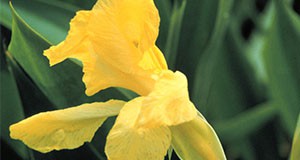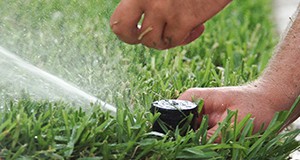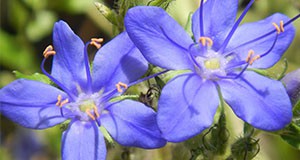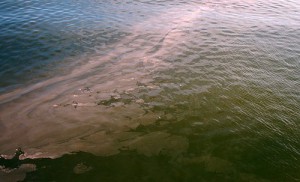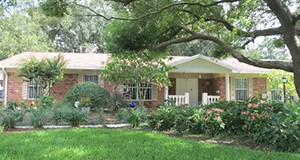
To help homeowners predict the impact of implementing some of the water conservation measures listed on Florida-Friendly Landscaping™ checklist, this 5-page fact sheet offers a table of estimated water savings. Homeowners can select activities which are the best fit for their landscape and can also see which have the most conservation potential. The water savings is compared to a baseline case of typical irrigation behavior. This 5-page fact sheet was written by Mackenzie Boyer and Michael Dukes, and published by the UF Department of Agricultural and Biological Engineering, August 2015. (Photo credit: Michael Gutierrez, UF/IFAS)
http://edis.ifas.ufl.edu/ae515
Category: Environment
Basics of the National Flood Insurance Program
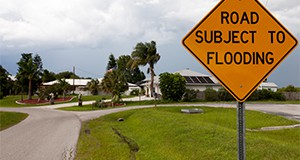
Established by Congress in 1968 because the private market stopped offering flood insurance, the NFIP provides federally backed flood insurance to property owners in participating communities. This 10-page fact sheet covers topics such as: why buy flood insurance, recent changes, flood zones and insurance rate maps, ways to reduce premiums, rate increases for pre-1974 structures, and actions communities can take to lower citizen premiums related to climate change and sea-level rise. Written by Thomas Ruppert and published by the UF Department of Sea Grant, July 2015.
http://edis.ifas.ufl.edu/sg139
Field Observations During the Eleventh Microwave Water and Energy Balance Experiment (MicroWEX-11) from April 25 through December 6, 2012
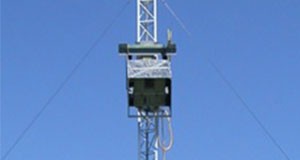 This new report from UF/IFAS researchers provides another set of observation data that can be used to develop better models for accurate prediction of weather and near-term climate. It describes the observations conducted during the MicroWEX-11, a season-long experiment incorporating active and passive microwave observations for bare soil, elephant grass, and sweet corn using a variety of sensors to understand land–atmosphere interactions and their effect on observed microwave signatures. These observations match that of satellite-based passive microwave radiometers and NASA’s recently launched Soil Moisture Active Passive (SMAP) mission. This 96-page report was written by Tara Bongiovanni, Pang-Wei Liu, Karthik Nagarajan, Daniel Preston, Patrick Rush, Tim H.M. van Emmerik, Robert Terwilleger, Alejandro Monsivais-Huertero, Jasmeet Judge, Susan Steele-Dunne, Roger De Roo, Ruzbeh Akbar, Ella Baar, Max Wallace, and Anthony England and published by the UF Department of Agricultural and Biological Engineering, July 2015.
This new report from UF/IFAS researchers provides another set of observation data that can be used to develop better models for accurate prediction of weather and near-term climate. It describes the observations conducted during the MicroWEX-11, a season-long experiment incorporating active and passive microwave observations for bare soil, elephant grass, and sweet corn using a variety of sensors to understand land–atmosphere interactions and their effect on observed microwave signatures. These observations match that of satellite-based passive microwave radiometers and NASA’s recently launched Soil Moisture Active Passive (SMAP) mission. This 96-page report was written by Tara Bongiovanni, Pang-Wei Liu, Karthik Nagarajan, Daniel Preston, Patrick Rush, Tim H.M. van Emmerik, Robert Terwilleger, Alejandro Monsivais-Huertero, Jasmeet Judge, Susan Steele-Dunne, Roger De Roo, Ruzbeh Akbar, Ella Baar, Max Wallace, and Anthony England and published by the UF Department of Agricultural and Biological Engineering, July 2015.
http://edis.ifas.ufl.edu/ae514
Golden Canna: Canna flaccida
Golden canna is a native wetland plant with bright yellow flowers that can be found throughout most of Florida. This 4-page facts sheet details the golden canna’s biology, distribution and habitat, propagation, pests and diseases, and landscaping and other uses. Written by Edward F. Gilman, Carl J. Della Torre III, and Lyn A. Gettys, and published by the UF Department of Environmental Horticulture, June 2015.
http://edis.ifas.ufl.edu/fp102
Encouraging Landscape Water-Conservation Behaviors #3: Developing Extension and Outreach Messages That Encourage Landscape Water Conservation Practice Adoption
Message framing can be an effective tool for crafting messages for a target audience. This 5-page fact sheet explains how Extension can use gain and loss message framing to encourage Florida residents who irrigate their home landscape to adopt water-conservation practices. Part three of the series Encouraging Landscape Water-Conservation Behaviors and written by Courtney Owens, Laura Warner, Joy Rumble, Alexa Lamm, and Randall Cantrell, and published by the UF Department of Agricultural Education and Communication, June 2015.
http://edis.ifas.ufl.edu/wc201
Using the Decision-Ade(TM) Segmentation Strategy to Better Understand Extension Audiences

Decision-Ade™ is a tool Extension can use to better understand how residents with a range of household budgets feel about their utility bills. Analyzing households in terms of both income and utility bill “botheredness” creates a more comprehensive picture of that household’s utility use and its willingness to modify utility consumption relative to other households. This 5-page fact sheet uses survey data of Florida residents to demonstrate the insights Decision Ade™ can provide and how those insights can inform Extension programming. Written by Randall Cantrell, Laura Warner, Joy Rumble, and Alexa Lamm, and published by the UF Department of Family, Youth and Community Sciences, July 2015.
http://edis.ifas.ufl.edu/fy1461
Contaminantes en el Medio Ambiente Urbano: Los Perfluoroalquilos
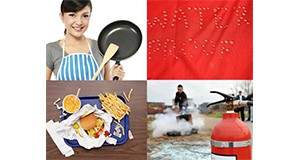 Los perfluoroalquilos–los perfluorocarbonos (PFC) o, en inglés, perfluoroalkyl substances (PFASs)–son los productos químicos artificiales más comunes y persistentes en el planeta. Algunos de los productos más comunes que contienen perfluoroalquilos son sartenes de teflón, utensilios de cocina antiadherente, chaquetas impermeables (como Gore-Tex), espumas de extinción de incendios, envases de alimentos, alfombras y telas para muebles. Los perfluoroalquilos poseen un largo tiempo de residencia en el medio ambiente, lo que significa que los perfluoroalquilos pueden acumularse en los organismos en niveles que causan efectos nocivos.
Los perfluoroalquilos–los perfluorocarbonos (PFC) o, en inglés, perfluoroalkyl substances (PFASs)–son los productos químicos artificiales más comunes y persistentes en el planeta. Algunos de los productos más comunes que contienen perfluoroalquilos son sartenes de teflón, utensilios de cocina antiadherente, chaquetas impermeables (como Gore-Tex), espumas de extinción de incendios, envases de alimentos, alfombras y telas para muebles. Los perfluoroalquilos poseen un largo tiempo de residencia en el medio ambiente, lo que significa que los perfluoroalquilos pueden acumularse en los organismos en niveles que causan efectos nocivos.
This 6-page fact sheet is the Spanish language version of Contaminants in the Urban Environment: Perfluoroalkyl Substances, written by Ignacio A. Rodriguez-Jorquera and Gurpal S. Toor, and published by the UF Department of Soil and Water Science, June 2015.
http://edis.ifas.ufl.edu/ss644
Feature image credit: iStock/Thinkstock.com (non-stick pan, waterproof fabric, and fire fighting foam)/Digital Vision/Thinkstock.com (fast food)
Orchid Pollination Biology
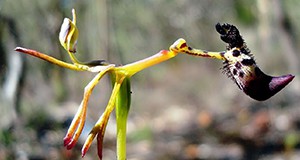
Orchids and their pollinators have developed fascinating co-adaptations that promote orchid pollination. This 6-page fact sheet details the various and often strange ways that orchids attract pollinators. The kinds of insects and animals that pollinate orchids and orchids’ reproductive anatomies and processes are also covered. Written by Haleigh Ray and Wagner Vendrame, and published by the UF Department of Environmental Horticulture, June 2015.
http://edis.ifas.ufl.edu/ep521
Tea Shot-Hole Borer Euwallacea fornicates (Eichhoff, 1868) (Insecta: Coleoptera: Curculionidae: Scolytinae)
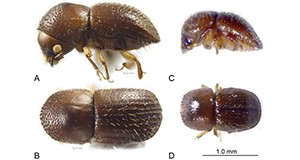
The tea shot-hole borer is an Asian ambrosia beetle introduced to Florida in the early 2000s. In Florida it does not have any known economic impact, but it is a serious pest of tea around the world and is one of the few ambrosia beetles that can infest healthy plants. The tea shot hole borer has a symbiotic relationships with the ambrosia fungus Fusarium ambrosium (Gadd & Loos), which is also a weak plant pathogen. This 4-page fact sheet includes diagnosis section with guidance for avoiding misidentification. Written by You Li, Andrea Lucky, and Jiri Hulcr, and published by the UF Department of Entomology and Nematology, June 2015.
http://edis.ifas.ufl.edu/in1090
A Sand Fly Lutzomyia longipalpis (Lutz and Neiva) (Insecta: Diptera: Psychodidae: Phlebotominae)
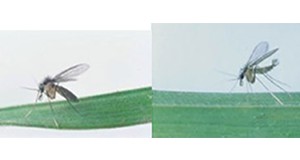 The true sand flies are densely covered with setae, have long slender legs, and broad and pointed wings that are held erect at rest. Several phlebotomine species are vectors of the protozoan parasites in the genus Leishmania, that are the causal agents of leishmaniasis. Visceral leishmaniais is the most severe form of the disease, and is fatal to the human or dog host if untreated. This 6-page fact sheet was written by Maria C. Carrasquilla and Phillip E. Kaufman, and published by the UF Department of Entomology and Nematology, June 2015. (Photo credit: Cristina Ferro, Instituto Nacional de Salud, Colombia
The true sand flies are densely covered with setae, have long slender legs, and broad and pointed wings that are held erect at rest. Several phlebotomine species are vectors of the protozoan parasites in the genus Leishmania, that are the causal agents of leishmaniasis. Visceral leishmaniais is the most severe form of the disease, and is fatal to the human or dog host if untreated. This 6-page fact sheet was written by Maria C. Carrasquilla and Phillip E. Kaufman, and published by the UF Department of Entomology and Nematology, June 2015. (Photo credit: Cristina Ferro, Instituto Nacional de Salud, Colombia
http://edis.ifas.ufl.edu/in1091
Vespiform Thrips Franklinothrips vespiformis Crawford (Insecta: Thysanoptera: Aeolothripidae)
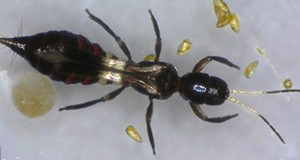
Franklinothrips vespiformis Crawford is a predatory thrips with a pantropical distribution. The distinctive red, humped-back larvae and fast-moving ant-like adults are predaceous on small arthropods. In addition to being easily mistaken for an ant, this beneficial thrips is unusual in that it constructs a silken cocoon within which it pupates. Males of this species are rare. This species is sold for use as a biological control agent in botanical gardens, zoos, interior landscapes, research greenhouses, nurseries with ornamental plants as well as outdoors in subtropical regions. This 4-page fact sheet was written by Runqian Mao, Yingfang Xiao, and Steven P. Arthurs, and published by the UF Department of Entomology and Nematology, March 2015. (Photo credit: Runqian Mao, UF/IFAS)
http://edis.ifas.ufl.edu/in1083
Black Scale Saissetia oleae (Olivier, 1791) (Insecta: Hemiptera: Coccoidea: Coccidae)
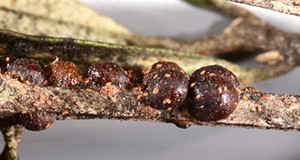 The black scale is an important pest of citrus and olive trees. Originally from South Africa, this scale is now distributed worldwide. In Florida, black scale is found on citrus, cultivated olive, avocado, and many popular landscape plants. It is likely that black scale, like many invasive pests, was imported to the United States on infested nursery plants. Based on their small size and the unique life history of scale insects, these insects are difficult to detect and control. This 4-page fact sheet was written by Morgan A. Byron, Jennifer L. Gillett-Kaufman, and Sandra A. Allan, and published by the UF Department of Entomology and Nematology, March 2015. (Photo credit: Lyle Buss, UF/IFAS)
The black scale is an important pest of citrus and olive trees. Originally from South Africa, this scale is now distributed worldwide. In Florida, black scale is found on citrus, cultivated olive, avocado, and many popular landscape plants. It is likely that black scale, like many invasive pests, was imported to the United States on infested nursery plants. Based on their small size and the unique life history of scale insects, these insects are difficult to detect and control. This 4-page fact sheet was written by Morgan A. Byron, Jennifer L. Gillett-Kaufman, and Sandra A. Allan, and published by the UF Department of Entomology and Nematology, March 2015. (Photo credit: Lyle Buss, UF/IFAS)
http://edis.ifas.ufl.edu/in1082
Black Turpentine Beetle, Dendroctonus terebrans (Olivier) (Insecta: Coleoptera: Curculionidae: Scolytinae)
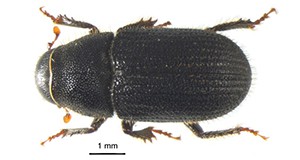 Black turpentine beetles bore into the inner bark of stressed or injured pines, where they breed and feed on phloem tissue. Adults are strongly attracted to volatile pine odors and readily breed in fresh stumps. In typical forests, infestations do not exhibit the rapid and devastating expansion characteristic of the closely related southern pine beetle, but in stands where stress conditions are frequent or persistent, black turpentine beetle can become a chronic pest and cause significant mortality over an extended period of time. Historically, black turpentine beetle has been a major pest of pines wounded or treated with herbicides in naval stores production. During the 1950s, black turpentine beetle damaged 37 million board feet of timber and contributed to the financial collapse of turpentine farms. This 5-page fact sheet was written by Albert E. Mayfield, John L. Foltz and Jiri Hulcr, and published by the UF Department of Entomology and Nematology, June 2015. (Photo credit Adam Black and Jiri Hulcr, UF/IFAS)
Black turpentine beetles bore into the inner bark of stressed or injured pines, where they breed and feed on phloem tissue. Adults are strongly attracted to volatile pine odors and readily breed in fresh stumps. In typical forests, infestations do not exhibit the rapid and devastating expansion characteristic of the closely related southern pine beetle, but in stands where stress conditions are frequent or persistent, black turpentine beetle can become a chronic pest and cause significant mortality over an extended period of time. Historically, black turpentine beetle has been a major pest of pines wounded or treated with herbicides in naval stores production. During the 1950s, black turpentine beetle damaged 37 million board feet of timber and contributed to the financial collapse of turpentine farms. This 5-page fact sheet was written by Albert E. Mayfield, John L. Foltz and Jiri Hulcr, and published by the UF Department of Entomology and Nematology, June 2015. (Photo credit Adam Black and Jiri Hulcr, UF/IFAS)
http://edis.ifas.ufl.edu/in636
An ambrosia beetle Xyleborus affinis Eichhoff, 1868 (Insecta: Coleoptera: Curculionidae: Scolytinae)
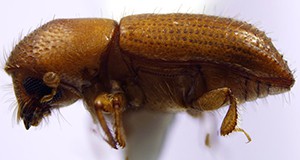 Xyleborus affinis is one of the most widespread and common ambrosia beetles in the world. It is also very common in Florida. Like other ambrosia beetles, it bores tunnels into the xylem of weakened, cut or injured trees and farms gardens of symbiotic fungus for food. Females lay eggs in the fungus-lined galleries and larvae feed exclusively on the fungi. Recent studies have shown that Xyleborus affinis can vector the fungus responsible for laurel wilt disease, which is lethal to numerous species of trees in the Lauraceae family. This 5-page fact sheet was written by Lanette Sobel, Andrea Lucky, and Jiri Hulcr, and published by the UF Department of Entomology and Nematology, June 2015. (Photo credit: Juri Hulcr, UF/IFAS)
Xyleborus affinis is one of the most widespread and common ambrosia beetles in the world. It is also very common in Florida. Like other ambrosia beetles, it bores tunnels into the xylem of weakened, cut or injured trees and farms gardens of symbiotic fungus for food. Females lay eggs in the fungus-lined galleries and larvae feed exclusively on the fungi. Recent studies have shown that Xyleborus affinis can vector the fungus responsible for laurel wilt disease, which is lethal to numerous species of trees in the Lauraceae family. This 5-page fact sheet was written by Lanette Sobel, Andrea Lucky, and Jiri Hulcr, and published by the UF Department of Entomology and Nematology, June 2015. (Photo credit: Juri Hulcr, UF/IFAS)
http://edis.ifas.ufl.edu/in1094
Asian Horntail Eriotremex formosanus (Matsumura) (Insecta: Hymenoptera: Symphyta: Siricidae: Tremicinae)
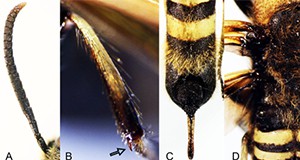
Since it was introduced to North America, the Asian woodwasp has become the most common wood wasp in Florida. It is not considered an economically important pest because it only attacks dying or dead trees, but the species may someday prove to be a pest and its ecological impacts in North American forests remain unknown. This 4-page fact sheet was written by You Li and Jiri Hulcr, and published by the UF Department of Entomology and Nematology, June 2015. (Photo credit: You Li, UF/IFAS)
http://edis.ifas.ufl.edu/in1095
Skyflower: Hydrolea corymbosa
Skyflower is a native wetland plant that produces brilliant blue flowers and can be found throughout Florida. This 4-page facts sheet details skyflower biology, distribution and habitat, propagation, and uses. Written by Lyn A. Gettys and Carl J. Della Torre III, and published by the UF Department of Agronomy, July 2015.
http://edis.ifas.ufl.edu/ag397
Climate Change and the Occurrence of Harmful Microorganisms in Florida’s Ocean and Coastal Waters
Climate change is expected to result in increased temperatures of nearshore ocean water, and this could lead to increased growth of harmful microorganisms. These include algae that form noxious or toxic blooms, including red tides, and bacteria and other pathogens. This situation could have negative consequences in regard to human health and also Florida’s ocean-related economy. A 6-page fact sheet written by Karl Havens, and published by the UF Department of Sea Grant, June 2015.
http://edis.ifas.ufl.edu/sg136
Lionfish: Is It Safe to Eat?
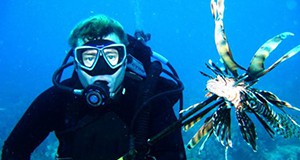
Lionfish is not a traditional or likely seafood selection, but growing interest in response to the invasive and increasing abundance has stirred recreational and commercial interest. This prolific, invasive fish is threatening reefs and coastal fisheries in ocean waters throughout the Caribbean Seas and neighboring regions, and eating lionfish is being encouraged as one of the best options to mitigate the its harmful impact. This 4-page fact sheet discusses the risks in handling and consuming lionfish, and offers recommendations for avoiding risk, for both recreational and commercial harvesters. Written by Steve Otwell, and published by Florida Sea Grant, April 2015.
http://edis.ifas.ufl.edu/sg135
Contaminants in the Urban Environment: Dioxins
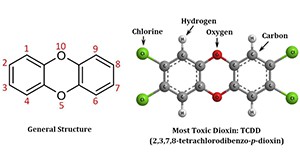 Dioxins are among the most toxic chemicals on the earth. They are by-products of a number of human activities such as combustion of fuels and wastes containing polyvinyl chloride (PVC), chlorine bleaching of paper products, and selected industrial processes. Current releases of dioxins by humans are due to the combustion of fuels and burning of household trash. The good news is that levels of dioxins in the environment have decreased in the United States throughout the past 30 years due to the improved emission controls and regulatory activities. But dioxins break down slowly, so they remain in the environment for a long time and accumulate in the food chain. Long-term exposure to dioxins can harm immune system, nervous system, endocrine system, and reproductive functions. This 7-page fact sheet discusses the sources, emission trends, and impacts of dioxins as well as the ways to minimize exposure to dioxins. Written by Yun-Ya Yang and Gurpal S. Toor, and published by the UF Department of Soil and Water Science, July 2015.
Dioxins are among the most toxic chemicals on the earth. They are by-products of a number of human activities such as combustion of fuels and wastes containing polyvinyl chloride (PVC), chlorine bleaching of paper products, and selected industrial processes. Current releases of dioxins by humans are due to the combustion of fuels and burning of household trash. The good news is that levels of dioxins in the environment have decreased in the United States throughout the past 30 years due to the improved emission controls and regulatory activities. But dioxins break down slowly, so they remain in the environment for a long time and accumulate in the food chain. Long-term exposure to dioxins can harm immune system, nervous system, endocrine system, and reproductive functions. This 7-page fact sheet discusses the sources, emission trends, and impacts of dioxins as well as the ways to minimize exposure to dioxins. Written by Yun-Ya Yang and Gurpal S. Toor, and published by the UF Department of Soil and Water Science, July 2015.
http://edis.ifas.ufl.edu/ss642
Facts about Wildlife Diseases: Rabies
 Rabies is a virus carried by mammals. It kills infected humans and animals if they are not treated shortly after exposure. Rabies can be prevented, but it cannot be cured once symptoms become evident. This 6-page fact sheet explains how rabies spreads, which animals can get it, how common it is, symptoms, what you can do to limit its spread and what to do in case of a possible rabies exposure. Written by Samantha M. Wisely and Holly K. Ober, and published by the UF Department of Wildlife Ecology and Conservation, June 2015.
Rabies is a virus carried by mammals. It kills infected humans and animals if they are not treated shortly after exposure. Rabies can be prevented, but it cannot be cured once symptoms become evident. This 6-page fact sheet explains how rabies spreads, which animals can get it, how common it is, symptoms, what you can do to limit its spread and what to do in case of a possible rabies exposure. Written by Samantha M. Wisely and Holly K. Ober, and published by the UF Department of Wildlife Ecology and Conservation, June 2015.
http://edis.ifas.ufl.edu/uw282
